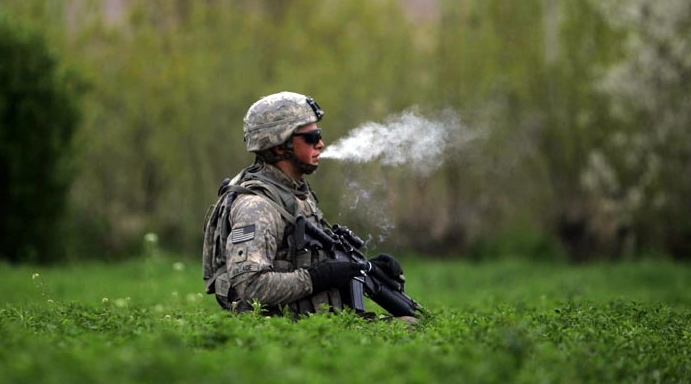Peer pressure turnaround: New research shows a reduction in youth tobacco use when friends stage an intervention
11/10/2017 / By Isabelle Z.

Despite an abundance of smoking cessation aids available, many people struggle to kick this dangerous habit. It’s not surprising that some adults who have been smoking for decades cannot imagine living without their cigarettes, but are the chances any better of getting young people to abandon the habit?
A study that was recently published in the Journal of Community Health discovered one very effective way to help younger smokers give up smoking for good. It involved a combination of informal conversations with young people about the consequences of the habit and a “quit kit” stocked with behavior-replacement activities.
A “Street Team” of nearly 30 college and high school students was put together to deliver interventions to young smokers. The team was trained by Breathe California’s Sacramento Taking Action Against Nicotine Dependence (STAND) project, and they attended street fairs, mall activities, concerts and other community events in Sacramento to deliver their message. Lasting five to ten minutes, this entailed one-on-one education about the dangers of smoking, motivational messages, and referrals to resources that can help people quit.
At the interventions, the Street Team also handed out quit kits to smokers that contained giveaways packaged inside a water bottle. These included tobacco alternatives that they could hold in their hands or put in their mouths, like trail mix, toothpicks, honey sticks, gum and distress balls.
Over a period of four years, 279 young smokers participated in the interventions, and the team made follow-up calls to 76 of the participants three times in a six-month period to ascertain how effective the intervention had been.
Quit rate from intervention more than twice the typical quit rate
They discovered that those who participated in their intervention had a 12.5 percent quit rate at six months, which compares very favorably to the 5 percent who typically manage to quit on their own. Seventy percent of the participants said that the quit kit helped them give up the habit, and they were particularly positive about the tobacco alternatives. They also said the discussions they had with the Street Team were useful, particularly those that helped them strategize and warned them about the financial and physical costs of smoking.
UC Davis Health Internal Medicine Physician and Senior Author Elisa Tong pointed out that nearly all smokers pick up the habit by the time they’re 26, so by finding a way to reach young smokers and get them to stop before the behavior becomes “hard wired,” they can hopefully counteract the aggressive marketing that tobacco companies use to try to get young people hooked on cigarettes and set them up for a lifetime of tobacco buying.
Meanwhile, study co-author and STAND Senior Program Director Kimberly Bankston-Lee said that the smoking cessation efforts that are most commonly geared toward newer smokers are unsuccessful because they’re based upon quitting methods that work for longer-term smokers. Younger smokers, she said, tend to be social smokers, so a different approach is called for.
“One of the key differences with our approach was the comfort factor. Younger smokers were able to interact with people their own age in locations where they all typically hang out,” she said.
Next, the researchers would like to test out the intervention at other sites, such as community college campuses, with the help of delivery teams from those sites. Although their effort may have started out in Sacramento, they’d like to develop tools that the entire nation can use to help curb this behavior. It couldn’t come at a better time, as the CDC reports that if the current youth smoking rate continues, 5.6 million Americans – or one out of every 13 – who are presently younger than 18 will die early due to smoking-related illnesses
Sources include:
Tagged Under: addiction, cigarettes, habit breaking, intervention, peer pressure, preventable disease, quitting smoking, smoking, smoking cessation, smoking intervention, STAND program, Tobacco, young smokers




















